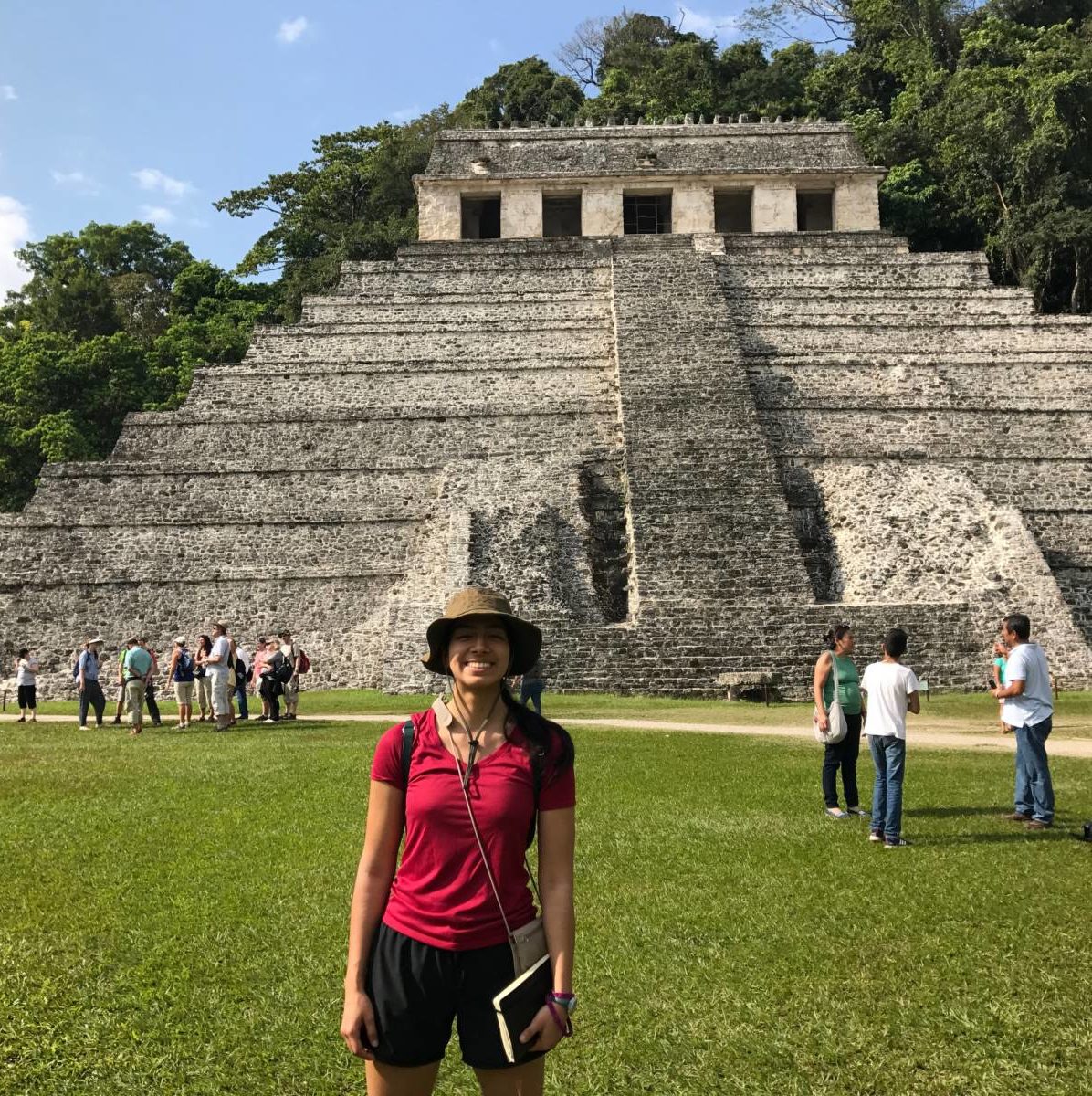This spring break, I took my seventh Princeton sponsored trip abroad, with my classmates in ART 468: The Art and Politics of Maya Courts. After spending half a semester learning about the basics of Mayan architecture, society, and hieroglyphic decipherment, we packed our bags and traveled to Chiapas, Mexico to visit Mayan sites and modern descendent communities.
The trip was as an immersive experience where we learned about new aspects of Mayan epigraphic and archaeological work and unexpected aspects of topics we had already studied. We started our week in the quiet town of Palenque, looking at Mayan inscriptions on-site. Throughout the week, we visited other Mayan sites, ranging from the impressively excavated steps of Tonina to ruins that were barely visible under plant growth in the jungles and the countryside.

In class, I had read scholarly work about Mayan inscriptions and even decoded (and written!) my own. I found a unique sense of wonder, however, in being face-to-face with the stories Mayan hands had carved into stone hundreds of years ago. With the guidance of Professor Bryan Just, I was able to recognize common narratives about royal accession, court captives, and religious ceremonies in the stones.
Seeing different kinds of ruins also helped me realize the challenges of real-life archaeology. After whitewater rafting to a site in Lacanja, we hiked to a site that was yet unexcavated. We noticed deep straight cuts in some of the stone stelas, a sign of the attempted looting that often lands artifacts on the black market.
At the end of the trip, we brought our learning into the real world by traveling to the highlands to San Cristobal de las Casas where modern day Mayan descendant communities live. The woven designs in the daily wear of many women traced directly back to Mayan artistic motifs. It is often easy as a student of Classics and history to overlook the modern manifestations of ancient culture, but our trip served as an important reminder that Mayan life continues with vibrance today.
Some of the most memorable parts of the trip, of course, were unrelated to the ancient Mayans–the improvement in my broken Spanish after conversations with my classmates and our bus driver Antonio, my dinnertime lesson in cumbia from our tour guide Ricardo, swimming in waterfalls (the Mayan entrances to the underworld), the sunrise over the mountains and friendships formed in the streets of San Cristobal at night. I returned to New Jersey tired and with a thesis to finish, but invigorated by the perspective-expanding experiences I had had and full of ideas for my final class research project.
I have posted on PCUR before about studying abroad in New Zealand, Brazil, and Greece. Each research-based experience I’ve had abroad has tangibly impacted my learning and led to lasting friendships with people on campus and around the world. Next year, the adventure continues–I’m headed to Mumbai, India with a Princeton fellowship! Do take advantage of Princeton’s resources and travel to research as much as you can, whether through a class, extracurricular opportunities, or semester or summers abroad. Study abroad, look out for traveling classes on the Course Registrar, apply for a job through the International Internship Program, or use SAFE to apply for university funding for your projects.
–Vidushi Sharma, Humanities Correspondent

